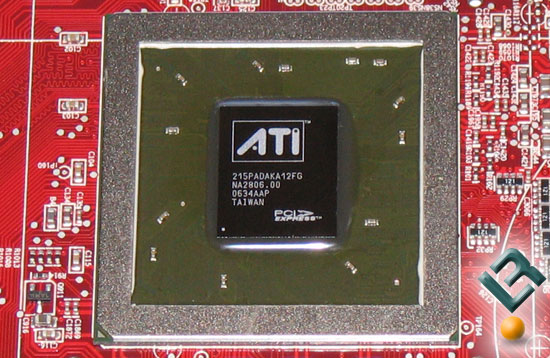ATI Radeon X1950 Pro CrossFire GPU Review
Conclusion
The first thing that sticks out at me with these cards is CrossFire. It’s been a long hard road for CrossFire but ATI has finally released a GPU solution designed from the ground up to be used in Multi-GPU solutions and it shows. The X1950 Pro is a terrific introduction of what’s to come from the red team in the near future. It’s very encouraging to see such a polished product being launched because CrossFire is now one big step closer to SLI.

The CrossFire experience this time around is much improved. The flexible internal connectors are light years ahead of the cumbersome Y-cable and employ forward thinking with bigger and better upgrades on the horizon. While the Catalyst Control Center is still slower than we’d like it is continually getting faster. Probably the biggest thing I’ve noticed this time around is that enabling and disabling CrossFire now takes only 5-6 seconds once you are in the CCC. The CrossFire pop ups no longer have a “lag” or wait time which was slightly annoying. The overall experience is one of a product that needs just a few tweaks here and there to be on the level of SLI.
In regards to single card performance the X1950 Pro handles itself well against the outgoing 7900 GT and the current bang for the buck leader, 7900 GS. My biggest problem with the high-end X1800 and X1900 products were heat and noise. This is where the X1950 Pro shines with the redesigned single slot heat sink and fan combo afforded by the lower power consumption. In most situations it offers X1800XT like performance minus the dust buster cooler, and without turning your room into a sauna. I love the fact that I never saw over 56c for the card in load conditions, and other than a brief full throttle during POST, the fan was quieter than our AMD heat sink!

My problem with the card was limited to the fact that I could not get either of the two cards to overclock a single MHz. We’ve spoken with the folks at ATI and are working to resolve the issue. ATI has assured us that they are seeing great overclocks coming from X1950 Pro.
Some of you may have noticed the lack of 7900 GS SLI results. Unfortunately due to scheduling conflicts I did not get the second GS in time for testing. However we will be doing a follow up article very soon to address the X1950 Pro overclocking and will include a head to head comparison of X1950 Pro CrossFire and 7900 GS SLI.
As we’ve said the X1950 Pro competes well with its chief competitor in price, the 7900 GS. Now that ATI has eliminated the handicap of noise, heat, and power usage it’s really tough to make a call between the two. Both cards will handle any game on the market at resolutions up to 1280×1024 with no problem and come in at a suggested price of around $200.
Personally, the features of the X1950 Pro stand out the most to me as ATI recently announced that Stanford’s Folding at Home will work on their current line of X1900 and X1950 GPU’s. ATI also has a High Quality Texture Filter that provides an edge in image quality that NVIDIA can’t match with any of their current products. Finally, the X1950 Pro is able to run with AA and HDR on in some titles where competing NVIDIA solutions cannot.
When it comes down to it, ATI got it right this time around with the X1950 Pro by including features and functionality NVIDIA can’t match, and by sorting the noise and heat issues that many were put off by. If overclocking isn’t your bag then I submit to you that the ATI Radeon X1950 Pro is the card to buy for those limiting their video card purchase to $200.
For those willing to get their hands dirty and overclock their card, we’ll have to reserve judgment until we can figure out what went wrong.
Legit Bottom Line: ATI delivers a well polished product, and most importantly, a great CrossFire experience to the mainstream market. With lower power usage, low heat output, and virtually no noise the X1950 Pro is the card many have been longing for.

Comments are closed.